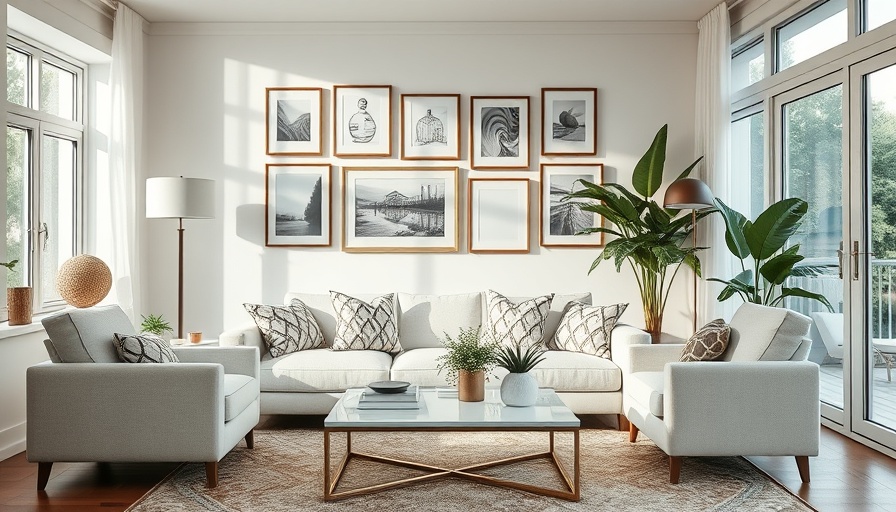
Exploring the Rise of Grid Walls in Interior Design
The trend of grid walls is swiftly making its mark as a sophisticated alternative to the traditional gallery wall. Unlike their hodge-podge counterparts, grid walls prioritize uniformity and structure, combining identical frames in a meticulously planned grid pattern. This overwhelming appeal lies in their ability to bring a sense of order to living spaces while still allowing for individual expression. Designers like Bria Hammel emphasize that grid walls provide a perfect balance of structure and personal touch, transforming a room into a gallery of curated art.
Why Are Grid Walls So Popular? Discover the Appeal
In today's design landscape, maximalism is reigning supreme; bold colors, statement wallpaper, and eclectic furnishings are prevalent. However, grid walls offer a counterbalance that satisfies the need for visual intrigue without overwhelmingly cluttering the space. As Nadia Watts notes, the 'quiet power' in the order of grid walls stabilizes a room's aesthetic, providing an anchor without the chaos of eclectic displays.
The Versatility of Grid Walls
Grid walls are not only visually satisfying but are also versatile enough to adapt to various design styles, from modern minimalism to traditional decor. Designers highlight that once established, grid walls are surprisingly easy to update over time, allowing homeowners to refresh their space without an extensive overhaul.
How to Create Your Own Grid Wall: A Step-by-Step Guide
Creating an effective grid wall requires planning. Designers recommend laying out your frames on the floor first to visualize spacing and avoid overcrowding. Consistency in frame size is crucial, as it creates a sense of uniformity. According to Hammel, precision in spacing contributes to the overall aesthetic, with many designers suggesting a group of four or more pieces for a balanced composition.
Counterarguments: Are Gallery Walls Still Relevant?
While grid walls are gaining traction, the allure of gallery walls remains steadfast. Critics say that gallery walls allow for more creativity and personal storytelling, showcasing unique experiences and memories. However, designers like Danielle Domingues argue that the rise of digital photography has afforded people the opportunity to curate family portraits and art in an attractive and timeless manner—something that grid walls encourage as well.
Future Predictions: The Evolving Design Landscape
As styles continue to evolve, grid walls may very well coexist with traditional gallery walls. They can serve complementary purposes, with grid walls functioning as a sophisticated backdrop for the personal narratives that gallery walls convey. The integration of these styles may redefine how we think about art arrangements in our homes.
The Unique Benefits of Grid Walls: More Than Just Aesthetic
Grid walls not only contribute to the visual atmosphere of a home but also encourage a deeper connection with the artwork displayed. By carefully curating what hangs on the wall, individuals can foster a sense of pride in their space and enhance their home’s storytelling potential.
Conclusion: Embracing the Grid Wall Trend
The grid wall trend represents more than a style switch; it's an opportunity to blend structure with personal expression. As homeowners seek ways to refresh their spaces, understanding the benefits and methods of creating grid walls can greatly enhance their design projects.
 Add Row
Add Row  Add
Add 




Write A Comment